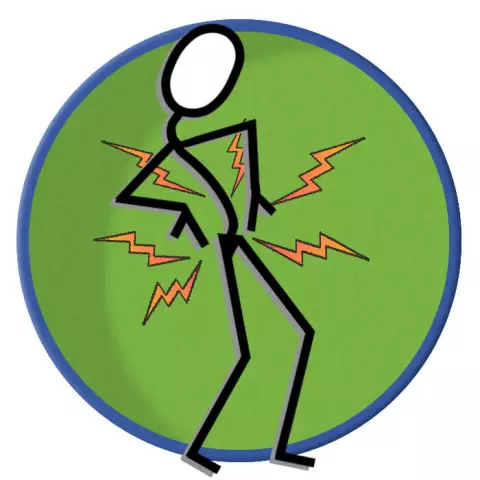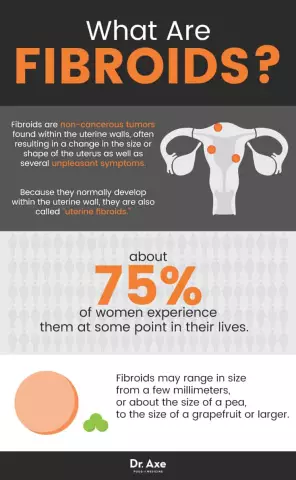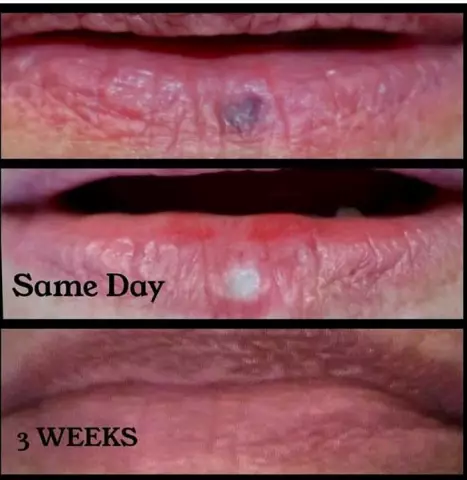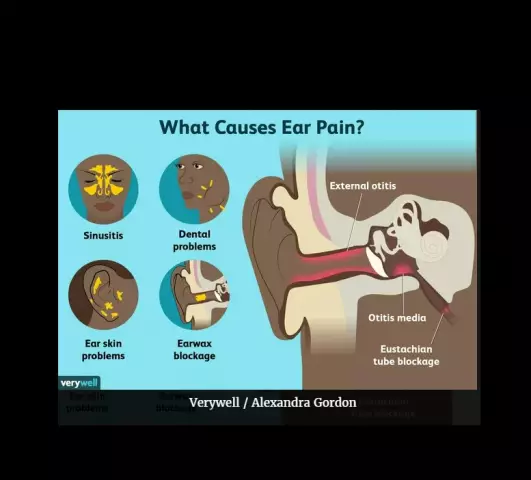- Author Rachel Wainwright [email protected].
- Public 2023-12-15 07:39.
- Last modified 2025-11-02 20:14.
Heel pain treatment
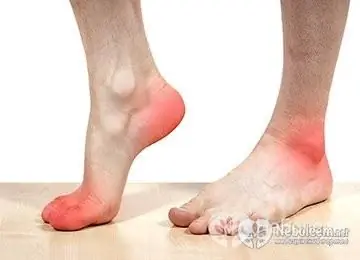
Soreness in the feet when walking is familiar to anyone. Moreover, heel pain is the most common syndrome, which has many causes. In some cases, the discomfort is just a consequence of fatigue, in others it can be a symptom of a serious illness. Only a specialist after a thorough examination will be able to determine the cause and prescribe treatment for heel pain.
The main causes of heel pain and treatment
The human foot acts as a shock absorber. The soft fat layer and the calcaneus are capable of withstanding enormous loads when walking and running. Meanwhile, a large number of blood vessels and nerve channels pass in this area, so it is softer, spongy, and easy to damage.
The most common causes of heel pain include:
- Plantar fasciitis is an inflammation or stretching of the plantar fascia (a dense formation of connective tissue that runs throughout the foot). This problem arises when there is a strong load on the fascia, which causes small tears of the ligament fibers, especially in the places of attachment to the heel bone. This disease can appear in any person, but most often people suffering from diabetes, obesity and flat feet, athletes are susceptible to it. For the treatment of heel pain in plantar fasciitis, anti-inflammatory drugs are primarily prescribed;
- Heel spur is a pathological growth of bone tissue, often accompanied by the deposition of salts, inflammatory processes. It can arise as an independent disease as a result of wearing uncomfortable shoes, but most often it is a consequence of gout or arthrosis. In this case, patients complain of acute pain in the heel. Spur treatment is carried out comprehensively, orthopedic insoles, medicines, massage, warm baths are recommended for unloading the foot;
- Calcaneal apophysitis is an inflammation of the center of the bone. Occurs with increased physical activity or wearing tight shoes. In this case, the pain syndrome manifests itself not from the bottom of the sole, but from the side. Often, this disease occurs in children aged 8-14 years, especially those who play sports. At this age, the bone has not yet fully formed, so constant stress on the growth plate (apophysis) causes inflammation and severe pain in the heel. For treatment, non-steroidal anti-inflammatory drugs are used, for example, Ibuprofen, Diclofenac, Brufen. During this period, it is recommended to reduce the load on the foot, exercise therapy and massage to improve blood circulation;
- Rheumatoid arthritis occurs when the patient's immune system begins to destroy healthy cells as foreign. The body is undergoing a constant inflammatory process, which gradually destroys the entire human skeletal system. With this disease, complex treatment is carried out, using drugs, physiotherapy, mud therapy, balneotherapy;
- Inflammation of the Achilles tendon (tendinitis) or bursa (bursitis). The cause of the disease is wearing uncomfortable shoes or stress on the tendons with prolonged walking. Especially often, inflammation occurs in people with flat feet. Symptoms are acute pain in the heel, and treatment is to ensure complete rest of the limb with a splint or elastic bandage. To relieve pain, anti-inflammatory drugs, ice, massage are used. In the chronic course of the disease, shock wave therapy is used;
- Reactive arthritis occurs with infections, especially genital infections (gonorrhea, chlamydia), and some others that are secretive. As a result, "reactive" inflammation of the heels develops. In this case, pain syndrome is observed not only when walking, but also during sleep. Inflammation often affects other joints as well. In this case, when treating heel pain, the first step is to get rid of the underlying infection with antibiotics;
- Chronic inflammatory diseases of the joints: ankylosing spondylitis, gout, psoriatic arthritis. Most often occur in people suffering from metabolic disorders, prone to the use of alcoholic beverages, excessively addicted to meat food. In this case, anti-inflammatory drugs, injections of corticosteroid hormones, laser therapy, and electrophoresis are used to treat severe pain in the heel. At the same time, they are fighting the underlying disease;
- Bruises or fractures can cause discomfort in the foot.
In addition to anti-inflammatory drugs, orthopedic insoles are often used during the treatment of pain in the heels and with spurs to relieve problem areas, warm baths with sea salt, soda. Therapeutic gymnastics, foot and shin massage have a positive effect. Ice baths or pads filled with finely crushed ice are helpful in reducing pain and inflammation.
Treatment of heel pain with folk remedies
If there are severe heel pains, it is necessary to urgently consult a doctor to avoid complications. However, you can relieve pain at first with home remedies:
- The alternation of heat and cold helps to quickly relieve discomfort in the heel. You can pour two basins of water of different temperatures and alternately dip your foot in cold and hot water. Or massage the foot with an ice cube for no more than 7 minutes until slight numbness;
- Hot salt baths are also used to treat heel pain. For one liter of water, you need to take 300 g of salt, keep your feet in water for half an hour. This procedure is contraindicated in osteoporosis, trauma and bruises;
- You can lubricate the sore spot with a mixture made from a raw egg. Previously, the egg is kept for 10 days in a glass with vinegar essence, then it is peeled from the film, ground and 40 g of butter is added;
-

Heel pain (spur) - treatment with decoctions and tinctures A compress with black radish is effective for pain in the heel. To do this, wash the radish and grate it on a fine grater along with the skin. Put the resulting gruel on a small piece of cloth, attach it to the leg, wrap the foot in a plastic bag and put on a tight sock. Apply a compress daily at night until the pain passes;
- You can also boil peeling potatoes and whole small potatoes, pour into a basin, wait to cool slightly. Mash the mashed potatoes, gradually adding the lugol. Keep your foot in this mixture until it is completely cool, then put on wool socks.
- Garlic gruel helps to relieve pain, which is applied for 3-4 hours to a sore spot. You can also put red hot peppers in a sock and walk in it throughout the day.
There are many alternative treatments for heel pain, but in any case, you should consult a specialist as soon as possible if the discomfort does not go away for several weeks or intensifies when walking.
YouTube video related to the article:
Found a mistake in the text? Select it and press Ctrl + Enter.

